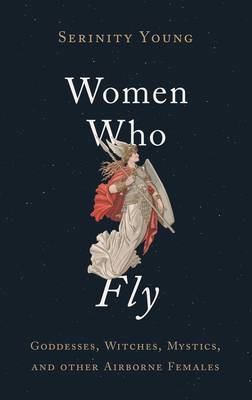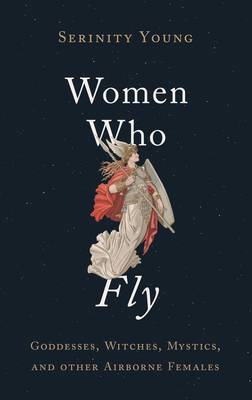
- Afhalen na 1 uur in een winkel met voorraad
- Gratis thuislevering in België vanaf € 30
- Ruim aanbod met 7 miljoen producten
- Afhalen na 1 uur in een winkel met voorraad
- Gratis thuislevering in België vanaf € 30
- Ruim aanbod met 7 miljoen producten
Zoeken
Women Who Fly
Goddesses, Witches, Mystics, and Other Airborne Females
Serinity Young
Hardcover | Engels
€ 64,95
+ 129 punten
Omschrijving
From the beautiful apsaras of Hindu myth to the swan maidens of European fairy tales, stories of flying women-some carried by wings, others by clouds, rainbows, floating scarves, and flying horses-reveal the perennial fascination with and ambivalence about female power and sexuality. In Women Who Fly, Serinity Young examines the motif of the flying woman as it appears in a wide variety of cultures and historical periods, in legends, myths, rituals, sacred narratives, and artistic productions. She considers supernatural women like the Valkyries of Norse legend, who transport men to immortality; winged deities like the Greek goddesses Iris and Nike; figures of terror like the Furies, witches, and succubi; airborne Christian mystics; and wayward, dangerous women like Lilith and Morgan le Fay. Looking beyond the supernatural, Young examines the modern mythology surrounding twentieth-century female aviators like Amelia Earhart and Hanna Reitsch.
Throughout, Young demonstrates that female power has always been inextricably linked with female sexuality and that the desire to control it is a pervasive theme in these stories. This is vividly depicted, for example, in the twelfth-century Niebelungenlied, in which the proud warrior-queen Br�nnhilde loses her great physical strength when she is tricked into surrendering her virginity. Even in the twentieth-century the same idea is reflected in the exploits of the comic book and film character Wonder Woman who, Young suggests, retains her physical strength only because her love for fellow aviator Steve Trevor goes unrequited.
The first book to systematically chronicle the figure of the flying woman in myth, literature, art, and pop culture, Women Who Fly offers a fresh look at the ways in which women have both influenced and been understood by society and religious traditions throughout the ages and around the world.
Throughout, Young demonstrates that female power has always been inextricably linked with female sexuality and that the desire to control it is a pervasive theme in these stories. This is vividly depicted, for example, in the twelfth-century Niebelungenlied, in which the proud warrior-queen Br�nnhilde loses her great physical strength when she is tricked into surrendering her virginity. Even in the twentieth-century the same idea is reflected in the exploits of the comic book and film character Wonder Woman who, Young suggests, retains her physical strength only because her love for fellow aviator Steve Trevor goes unrequited.
The first book to systematically chronicle the figure of the flying woman in myth, literature, art, and pop culture, Women Who Fly offers a fresh look at the ways in which women have both influenced and been understood by society and religious traditions throughout the ages and around the world.
Specificaties
Betrokkenen
- Auteur(s):
- Uitgeverij:
Inhoud
- Aantal bladzijden:
- 376
- Taal:
- Engels
Eigenschappen
- Productcode (EAN):
- 9780195307887
- Verschijningsdatum:
- 1/02/2018
- Uitvoering:
- Hardcover
- Formaat:
- Genaaid
- Afmetingen:
- 160 mm x 236 mm
- Gewicht:
- 757 g

Alleen bij Standaard Boekhandel
+ 129 punten op je klantenkaart van Standaard Boekhandel
Beoordelingen
We publiceren alleen reviews die voldoen aan de voorwaarden voor reviews. Bekijk onze voorwaarden voor reviews.








